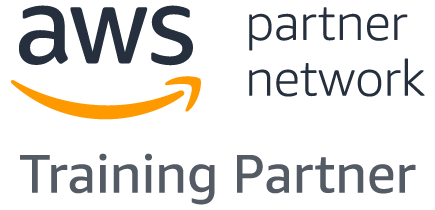Informationstechnologien & IT-Sicherheit
AWS Cloud Practitioner Essentials.
- Seminar
- Präsenz / Virtual Classroom
- 8 Termine verfügbar
- 8 Unterrichtseinheiten
- Teilnahmebescheinigung
- Online durchführbar
Seminarnummer: 26029
Der Einstieg in die AWS Cloud - nicht nur für IT-Mitarbeiter*innen.
Dieser Kurs richtet sich an Personen, die ein umfassendes Verständnis der Amazon Web Services (AWS) Cloud anstreben, unabhängig von spezifischen technischen Rollen. Sie lernen AWS-Cloud-Konzepte, AWS-Services, Sicherheit, Architektur, Preisgestaltung und Support kennen, um Ihr AWS-Cloud-Wissen aufzubauen.
Nutzen
Nach dem Seminar verfügen Sie über Skills zu
- Arbeitsdefinition von AWS-Cloud-Lösungen
- Unterscheidungen zwischen On-Premises, Hybrid-Cloud und All-In-Cloud
- Beschreibungen der grundlegenden globalen Infrastruktur der AWS Cloud
- Die sechs Vorteile der AWS-Cloud
- AWS-Kernservices, einschließlich Datenverarbeitung, Netzwerk, Datenbanken und Speicher
- Lösungen unter Verwendung von AWS-Cloud-Services mit verschiedenen Anwendungsfällen
- Das AWS Well-Architected Framework
- Das Modell der geteilten Verantwortung
- Zentrale Sicherheitsservices innerhalb der AWS Cloud
- Grundlagen der AWS-Cloud-Migration
- Finanzielle Vorteile der AWS Cloud für das Kostenmanagement einer Organisation
- Definition der Kernmodelle für Abrechnung, Kontoverwaltung und Preisgestaltung
- Einsatz von Preisfindungstools, um kosteneffiziente Entscheidungen für AWS-Services zu treffen
Zielgruppe
Cloud-interessierte Mitarbeiter*nnen aus den Bereichen, Vertrieb, Marketing, Business Analyse und Projekt Management. Für eher IT-technische Jobrollen empfehlen wir als Einstieg das Technical Essentials Seminar (AWS-A).
Anforderungen
Grundlegende Geschäfts- und Technikkenntnisse aus der IT-Branche.
Inhalte
Module 1: Introduction to Amazon Web Services
Module 2: Compute in the Cloud
Module 3: Global Infrastructure and Reliability
Module 4: Networking
Module 5: Storage and Databases
Module 6: Security
Module 7: Monitoring and Analytics
Module 8: Pricing and Support
Module 9: Migration and Innovation
Module 10: AWS Certified Cloud Practitioner Basics
- Summarize the benefits of AWS
- Describe differences between on-demand delivery and cloud deployments
- Summarize the pay-as-you-go pricing model
Module 2: Compute in the Cloud
- Describe the benefits of Amazon Elastic Compute Cloud (Amazon EC2) at a basic level
- Identify the different Amazon EC2 instance types
- Differentiate between the various billing options for Amazon EC2
- Describe the benefits of Amazon EC2 Auto Scaling
- Summarize the benefits of Elastic Load Balancing
- Give an example of the uses for Elastic Load Balancing
- Summarize the differences between Amazon Simple Notification Service (Amazon SNS) and Amazon Simple Queue Services (Amazon SQS)
- Summarize additional AWS compute options
Module 3: Global Infrastructure and Reliability
- Summarize the benefits of the AWS Global Infrastructure
- Describe the basic concept of Availability Zones
- Describe the benefits of Amazon CloudFront and Edge locations
- Compare different methods for provisioning AWS services
Module 4: Networking
- Describe the basic concepts of networking
- Describe the difference between public and private networking resources
- Explain a virtual private gateway using a real life scenario
- Explain a virtual private network (VPN) using a real life scenario
- Describe the benefit of AWS Direct Connect
- Describe the benefit of hybrid deployments
- Describe the layers of security used in an IT strategy
- Describe which services are used to interact with the AWS global network
Module 5: Storage and Databases
- Summarize the basic concept of storage and databases
- Describe benefits of Amazon Elastic Block Store (Amazon EBS)
- Describe benefits of Amazon Simple Storage Service (Amazon S3)
- Describe the benefits of Amazon Elastic File System (Amazon EFS)
- Summarize various storage solutions
- Describe the benefits of Amazon Relational Database Service (Amazon RDS)
- Describe the benefits of Amazon DynamoDB
- Summarize various database services
Module 6: Security
- Explain the benefits of the shared responsibility model
- Describe multi-factor authentication (MFA)
- Differentiate between the AWS Identity and Access Management (IAM) security levels
- Describe security policies at a basic level
- Explain the benefits of AWS Organizations
- Summarize the benefits of compliance with AWS
- Explain primary AWS security services at a basic level
Module 7: Monitoring and Analytics
- Summarize approaches to monitoring your AWS environment
- Describe the benefits of Amazon CloudWatch
- Describe the benefits of AWS CloudTrail
- Describe the benefits of AWS Trusted Advisor
Module 8: Pricing and Support
- Understand AWS pricing and support models
- Describe the AWS Free Tier
- Describe key benefits of AWS Organizations and consolidated billing
- Explain the benefits of AWS Budgets
- Explain the benefits of AWS Cost Explorer
- Explain the primary benefits of the AWS Pricing Calculator
- Distinguish between the various AWS Support Plans
- Describe the benefits of AWS Marketplace
Module 9: Migration and Innovation
- Understand migration and innovation in the AWS Cloud
- Summarize the AWS Cloud Adoption Framework (AWS CAF)
- Summarize six key factors of a cloud migration strategy
- Describe the benefits of various AWS data migration solutions, such as AWS Snowcone, AWS Snowball, and AWS Snowmobile
- Summarize the broad scope of innovative solutions that AWS offers
- Summarize the five pillars of the AWS Well-Architected Framework
Module 10: AWS Certified Cloud Practitioner Basics
- Determine resources for preparing for the AWS Certified Cloud Practitioner examination
- Describe benefits of becoming AWS Certified


